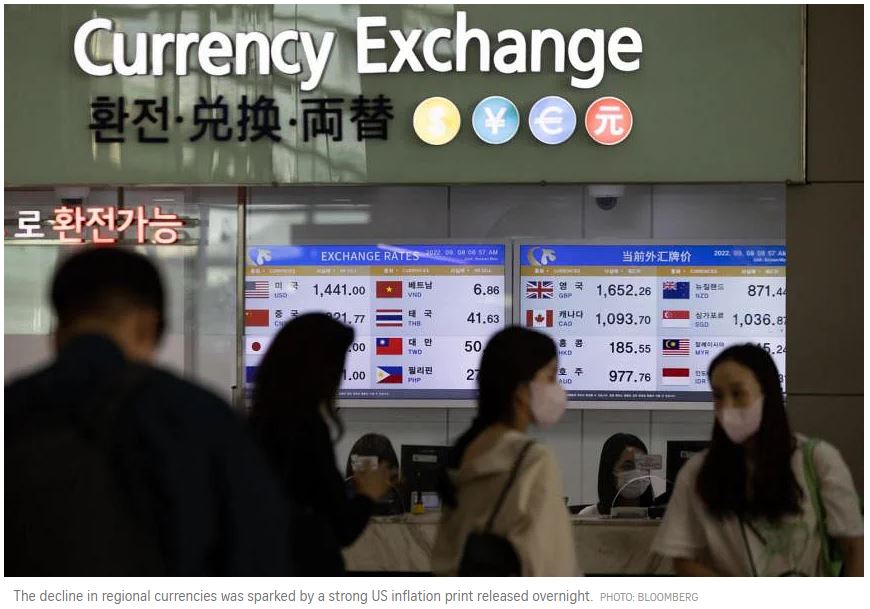Asia currency pushback grows as Fed fears ripple across the region
SINGAPORE – Policymakers in Asia pushed back against a surging dollar, seeking to stem losses as their currencies teetered on the brink of key levels that may trigger more selling.
Officials in Japan and South Korea ramped up the rhetoric, while China’s central bank set the daily reference rate on the yuan at the strongest bias on record. The decline in regional currencies was sparked by a strong United States inflation print released overnight.
The authorities in Asia are squaring off with traders who bet that regional currencies will continue to slide as more aggressive Federal Reserve tightening boosts the dollar. But a depleting stock of foreign reserves may limit the ability of central banks to fight against a surging greenback.
“It’s really about King dollar – no one can really beat them in tightening and they have the data to support them,” said strategist Eddie Cheung at Credit Agricole in Hong Kong. Policymakers in Asia are “acting to curb excessive volatility in markets as currency losses against the dollar amount”.
Traders entered a wave of sell orders on emerging Asian currencies from the get-go on Wednesday.
The won slid as much as 1.6 per cent to 1,395.55 per dollar, the biggest drop since June, within minutes of the market’s open. The baht plunged as much as 1.3 per cent to 36.739 to the greenback while the Philippine peso, Indonesian rupiah and Malaysian ringgit also declined.
“There’s not much, really, of a story out there other than buying dollar until there’s a fundamental change from central banks’ policy stance relative to the Fed,” said Mr Nick Twidale, chief executive of Asia-Pacific at foreign-exchange broker FP Markets in Sydney. “It’s one-way traffic, it’s the only story in town right now.”
As the currencies tumbled, the authorities in the region quickly stepped in.
Japanese Finance Minister Shunichi Suzuki said the government would not rule out options, including intervention in foreign exchange markets. South Korea’s Vice-Finance Minister Bang Ki-sun held an internal meeting and asked officials to closely monitor financial markets.
But recent moves suggest that intervention by the authorities – verbal or otherwise –has produced limited results.
The yen has hit a successive series of 24-year lows even as Japanese officials repeatedly warned against rapid moves. Similarly, the won has shrugged off jawboning by policymakers to drop to the weakest since 2009.
The offshore yuan is on track for a seventh month of losses despite a move by officials to stabilise it by allowing banks to hold less foreign currencies in reserve.
In contrast, the Indian rupee has rebounded from a record low after central bank chief Shaktikanta Das said the authorities are in the foreign-exchange market almost every day.
Meanwhile, the Singapore dollar has held relatively steady against the US dollar, and is emerging as Asia’s best performer with a loss of around 3.2 per cent this year versus the US dollar so far, according to The Straits Times.
“Throughout the history of markets, verbal interventions as well as FX interventions, they’ve had at best a temporary impact,” said Mr Philip McNicholas, Asia sovereign strategist at Robeco Group in Singapore.
“The Fed can continue with its hawkish rhetoric and its hawkish moves and the rest of the world is just left to deal with it.” BLOOMBERG


 English
English




